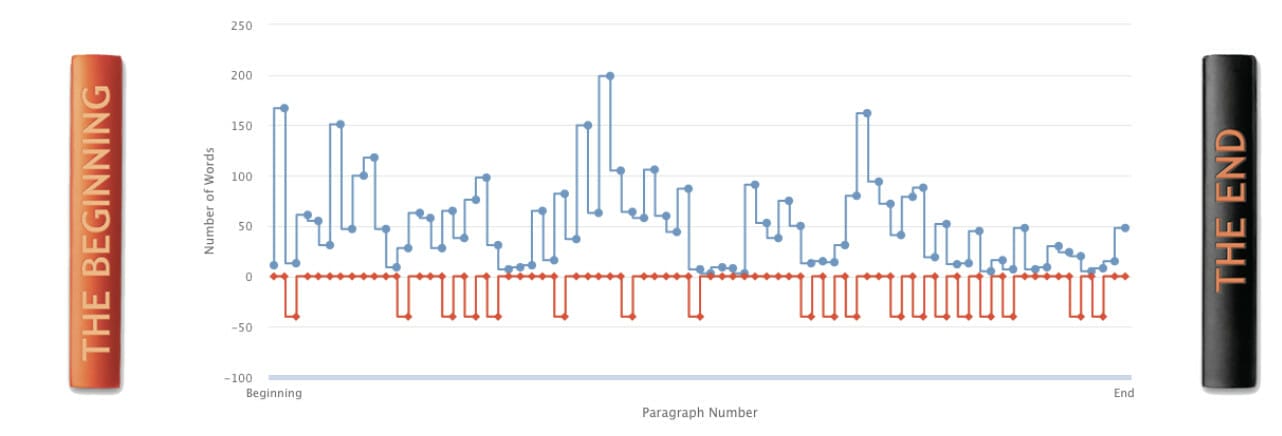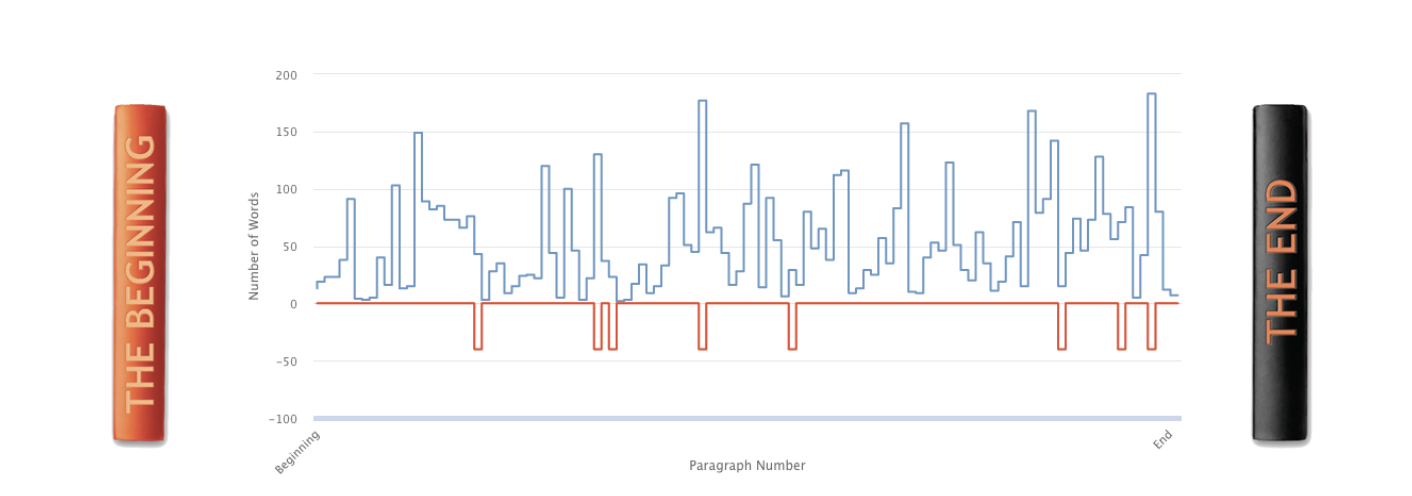Drafting your novel is only the first step in the writing process.
Many authors complete several rounds of revision followed by multiple copyediting passes before they even think about sending their book to beta readers, and then complete another pass or two before querying an agent. Some writers even hire editors or look to some of the best grammar checker tools to help them work through their draft and make it as strong as possible.
Now there’s an option for writers who want to improve their drafts before sending them out into the world: AutoCrit.
This online software is designed to help authors identify their draft’s strengths and weaknesses while offering specific suggestions for improvement. Of course, like any online service, AutoCrit has its own strengths and weaknesses — so let’s take a close look at what AutoCrit does well, where it falls short and whether authors should add AutoCrit to their toolkits.
What is AutoCrit?
AutoCrit is an online book editing program that calls itself the “fiction writer’s secret weapon.”
Create a free AutoCrit account to access interactive editing tools and automatic suggestions to help you improve your manuscript. Upgrade to a $30/month Professional account to receive more than 30 interactive editing reports along with an AutoCrit Summary Score (we’ll get to that), or invest in the $80/month Elite account and start taking courses on the craft of revision and the art of publishing.
Here’s what the $30/month Professional account offers:
- Fully-featured word processor and editing suite
- No word limits
- Spelling & grammar checker
- Proven editing guidance based on extensive research into real-world publishing standards
- Secure online storage for your manuscript
- 30 interactive editing reports
- Tackle weak writing, useless filler, repetitive phrasing, shifts in tense and point of view, and even slow or uneven story pacing.
- Expert guidance by genre, including Romance, Sci-Fi, Young Adult, and more.
- Compare your word choices to the style of best-selling authors like Stephen King, J.K. Rowling, James Patterson, Danielle Steel, and many more.
- Track your progress with the unique AutoCrit Summary Score
Can AutoCrit really help you edit your novel? Do its suggestions hold up, or is writing too subjective to be evaluated by software? I got the chance to test-drive a Professional account, and here’s what I learned.
AutoCrit identified my novel’s biggest flaw
When I put the first 4,000 words of my self-published novel The Biographies of Ordinary People into AutoCrit, I received an AutoCrit Summary Score of 64.18. Essentially, a D. Not great, especially for a book that has 4.05 stars on Goodreads, received 5 stars from Foreward Clarion Reviews and is a Library Journal Self-e Selection.
Does that mean AutoCrit doesn’t know good writing when it sees it? Or did I mistakenly believe my book was better than it actually is? I decided to test a second book — a certified literary classic — and compare the results.
The elevator pitch for The Biographies of Ordinary People is “a Millennial-era Little Women,” so I dropped in the first 4,000 words of Louisa May Alcott’s famous text. AutoCrit gave it a score of 89.47 — much better than the score my novel had received.
Then I started comparing the AutoCrit reports side-by-side. In many cases, Alcott’s text and mine hit the exact same metrics: both 4,000-word excerpts included roughly the same number of sentences (231, 217) and the same average sentence length (18 words). Both excerpts used just over 800 “uncommon words” and neither had an excess of adverbs.
The big difference? Pacing. Little Women had zero “slow-paced paragraphs;” Biographies had 19. This ties right in with the most common criticism I received about the book: although the writing was beautiful, the story itself was occasionally too quiet/slow.
In other words, AutoCrit correctly identified the most significant problem with my novel.
When I began digging into the interactive editing reports, I noticed that each slow-paced paragraph had been highlighted—plus, AutoCrit provided a series of visuals that helped me understand how my story’s slow paragraphs were affecting the narrative. In this graph, every slow paragraph is represented by an orange valley (and there are a lot of orange valleys).

I am currently working on a mystery novel, and when I fed the first 6,000 words of this new book into AutoCrit, the reports indicated I was doing a much better job with my pacing. I took the criticism of my first book to heart, and clearly learned from it.

That said, those 6,000 words still only received an AutoCrit Summary Score of 67.69. This time, the editing reports revealed that AutoCrit wanted me to work on “strong writing.” For example: AutoCrit thought I was using too many passive indicators, suggesting I rewrite sentences like “I already told Ed you’d be there” because of the contracted you would.
This brings me to my biggest criticism of the AutoCrit system: that it analyzes your writing word-by-word, without understanding that “I already told Ed you’d be there” isn’t a clunky passive-voice sentence. (You can’t add “by zombies” to the end of it, after all — and if I’m going to use the passive voice, there had better be zombies involved.)
Let’s look a little more carefully at this issue.
AutoCrit doesn’t always consider context
If your AutoCrit Summary Score is lower than you were expecting, it might be because your manuscript needs a lot of improvement — or it might be because AutoCrit is reading your manuscript without context.
When I gave AutoCrit the first 6,000 words of the mystery novel I’m currently drafting, the program dinged me for using the dialogue tag “glanced” twice. However, when you look at the use in context, the word choice becomes deliberate rather than accidentally redundant:
“A rolling stone,” Harrison said. “I admire it. Sometimes I wish I’d lived in a few more places.” He glanced at Larkin again, eyes crinkling to match his smile. “I suppose there’s still time.” Then he glanced at his watch; silver, not smart. “Speaking of which—”
Likewise, AutoCrit told me I should remove the cliches “baked” and “plastered,” even though they refer to actual baked goods and actual plaster — not, as I’m assuming AutoCrit believes, marijuana and alcohol use.
The AutoCrit team is aware that its program doesn’t read for context. Here’s a more detailed description of the way AutoCrit analyzes a text for passive indicators:
Rather than performing a simple verb combination check to determine passive voice (ie. an auxiliary verb followed by a past participle verb), when running AutoCrit’s Passive Indicators report, you will instead be given highlighting to draw your attention more closely to the past-tense passages you’ve written.
The intention behind this report is to give you greater control over your editing experience, and make you think more deeply and professionally about your writing. It should not be treated as a strict passive phrase detector.
If you feel like AutoCrit is judging your writing too harshly — or spotting problems that aren’t really there — check out its support section. You’ll learn how AutoCrit evaluates writing for issues like word choice, repetition and momentum, and you might end up feeling a little better about whatever score your novel might have received.
Still, it’s worth pointing out that even though some of AutoCrit’s individual critiques were a little off, its overall assessment that my mystery novel needs stronger writing is, once again, accurate. It’s something I’ve been taking notes on myself, as I’ve worked my way up the word count. Right now I’m focusing on getting to the end of the first draft, and then I’ll go back and figure out how to make it better.
Use AutoCrit to help you think more carefully about your writing
If you’re interested in using AutoCrit to help you edit and revise your novel, here’s my advice:
- Focus on trends over details. When you’re reading through AutoCrit’s editing reports, don’t get hung up on the details. Pay less attention to AutoCrit’s recommendation that you remove 110 “passive indicators” from your draft, and more attention to where the majority of AutoCrit’s editing recommendations are clustered. Does your novel have pacing issues? Repetition issues? Point-of-view issues?
- Click on everything. When I clicked on AutoCrit’s “Pacing and Summary” tab and then clicked on “Paragraph Variation,” I got a bar graph showing me the number of words in each paragraph—but no information on how to contextualize that data. It was only when I clicked on “View Summary” that I was able to access the paragraph/pacing chart I shared above (the one with the peaks and valleys in it) and understand how my paragraphs were affecting my reader’s journey through the story.
- Take AutoCrit’s suggestions literally. AutoCrit’s suggestions are just that: suggestions. Some of them will be incorrect. Some of them will be so obviously correct that you’ll immediately implement them. The rest will require you to ask yourself: Can this sentence be a little better? Is there a way to improve this paragraph? Or am I happy with the draft as it currently stands?
AutoCrit isn’t designed to be a prescriptive tool. Instead, it’s designed to make you think more carefully about your own writing; to read through the scores and suggestions and learn where your writing can be improved.
Bottom line of our AutoCrit review: Once you’ve run your draft through AutoCrit, you’ll have a good idea of where your novel’s strengths and weaknesses are and what you need to do next — whether that’s giving your book another revision pass, sending it to a critique partner, asking for feedback from a group of beta readers, querying an agent or prepping your finished book for self-publication.
This post contains affiliate links. That means if you purchase through our links, you’re supporting The Write Life — and we thank you for that!
Photo via GuadiLab / Shutterstock







